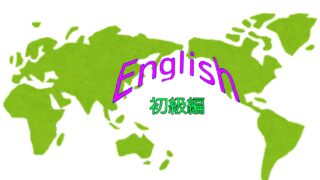英検2級レベルの英語長文問題を読み解きながら、水産学の基本的な知識を身につけることが出来る問題集をkindleにて出版しました!
この書籍を手に取ることで、あなたは単なる語学学習を超え、知識を基盤に世の中の出来事を正しく理解し、判断する力を養うことができます。海産資源の保全や食料安全保障など、グローバルな課題に直面する現代社会において、専門知識と英語力の両輪は、未来を切り開く大きな武器となるでしょう。

英語長文問題で読み解く水産学-30: 水産学の重要テーマを英語で読み解く 英語長文問題で読み解く学問シリーズ
これまでに発売した英語の長文問題集の一覧はコチラから!
英語長文で読み解く水産学-30 の中身を公開!
以下、どんな内容になっているのかを公開します!
目次
はじめに
1.漁業資源 – 漁獲可能な水生生物資源。持続可能な利用が重要。
2.資源管理 – 漁業資源を保護し、持続可能な利用を目指す手法。
3.過剰漁獲 – 資源が回復する以上に漁獲することによる問題。
4.漁業権 – 地域や国が水域の漁業を規制する権利。
5.漁業モニタリング – 漁業活動や資源状況を追跡するプロセス。
6.個体群動態 – 魚類や水生生物の繁殖、死亡、移動の研究。
7.漁業生態系管理 – 生態系全体を考慮した漁業管理。
8.海洋保護区 – 水産資源や生態系を保護する特定地域。
9.トレーサビリティ – 水産物がどこで捕られたかを追跡可能にする仕組み。
10.乱獲防止 – 資源減少を防ぐための規制と取り組み。
11.水産養殖 – 魚介類や海藻を人工的に育成・増殖する技術。
12.閉鎖循環型養殖 – 水を再利用する養殖システム。
13.多栽培養殖 – 複数種を同時に養殖し相乗効果を得る手法。
14.バイオフロック – 水質管理と餌資源を組み合わせた技術。
15.養殖水質管理 – 養殖場の水質を最適化する手法。
16.餌料効率 – 餌の摂取量に対する成長の効率。
17.環境持続性 – 自然環境を保全しつつ漁業を行う概念。
18.漁具技術 – 捕獲効率を高める漁具の開発。
19.水産ロボット – 養殖や漁業に利用されるロボット技術。
20.IoT漁業 – 漁業でのセンサーやデータ分析の利用。
21.水産物加工 – 水産物を保存・加工する技術。
22.スマート漁業 – デジタル技術を活用した効率的な漁業。
23.水産物流通 – 水産物の市場への流通プロセス。
24.水産経済学 – 漁業が地域経済や国際貿易に与える影響。
25.水産物価格 – 供給と需要によって変動する水産物の価格。
26.輸出入規制 – 水産物の国際取引に関する規制。
27.フードセキュリティ – 水産物が食料供給に果たす役割。
28.沿岸環境保護 – マングローブや湿地などの保全活動。
29.生態系サービス – 生態系が水産業にもたらす恩恵。
30.廃棄物利用 – 魚の副産物を活用する技術。
1.漁業資源 – 漁獲可能な水生生物資源。持続可能な利用が重要。
Understanding and Managing Global Fisheries Resources
Fisheries resources play a vital role in global food security and economic stability, providing livelihoods for millions of people worldwide. However, these resources face numerous challenges, from overfishing to climate change impacts. Understanding how to manage these resources sustainably is crucial for both current and future generations.
One of the most significant examples of fishery management is the Alaska pollock fishery in the Bering Sea. This fishery demonstrates how scientific monitoring and strict quota systems can maintain healthy fish populations while supporting a profitable industry. The management system includes regular stock assessments, careful monitoring of catch limits, and measures to protect other marine species. As a result, Alaska pollock remains one of the world’s most sustainable seafood sources, producing over 1.3 million tons annually.
The concept of Maximum Sustainable Yield (MSY) is fundamental to fisheries management. MSY represents the highest catch level that can be taken from a fish stock indefinitely without harming its population. For instance, the Atlantic herring fishery in Norway implements MSY principles by adjusting annual catch quotas based on scientific surveys of fish populations. This approach has helped maintain stable herring populations while supporting local fishing communities.
Aquaculture, or fish farming, has emerged as a crucial supplement to wild fisheries. China’s carp farming industry exemplifies successful aquaculture practices, producing nearly half of the world’s farmed fish. These operations use integrated farming systems where fish are raised alongside rice paddies, creating efficient use of resources while minimizing environmental impact.
Technology plays an increasingly important role in fisheries management. Satellite tracking systems and electronic monitoring help prevent illegal, unreported, and unregulated (IUU) fishing. For example, Chile’s jack mackerel fishery uses vessel monitoring systems to track fishing boats and ensure compliance with regulations. This technology has helped reduce illegal fishing by 80% since its implementation in 2019.
Climate change poses new challenges to fisheries resources. Rising ocean temperatures cause fish populations to shift their distribution patterns. The North Atlantic cod stocks have moved northward in response to warming waters, affecting traditional fishing grounds and requiring adaptation in management strategies. This situation highlights the need for flexible and adaptive management approaches.
Small-scale fisheries, which often operate in developing countries, require special attention. In the Philippines, community-based fisheries management has proven successful in protecting coral reef fish populations. Local communities establish marine protected areas and regulate fishing practices, resulting in increased fish populations and improved livelihoods for local fishers.
Bycatch reduction remains a critical issue in fisheries management. The Australian prawn fishery has successfully reduced bycatch by implementing turtle excluder devices (TEDs) and other selective fishing gear. These modifications have reduced unwanted catch by up to 60% while maintaining profitable prawn catches.
Research and monitoring are essential components of effective fisheries management. The Mediterranean bluefin tuna recovery demonstrates how scientific research can inform management decisions. After years of decline, strict quotas based on scientific assessments have helped the species recover from near collapse.
The future of fisheries resources depends on balanced management approaches that consider environmental, economic, and social factors. Success stories from various regions show that sustainable fisheries are possible with proper management, technological innovation, and stakeholder cooperation.
注釈
- Maximum Sustainable Yield (MSY) (最大持続可能生産量) – 漁業資源を枯渇させることなく、持続的に獲得できる最大の漁獲量
- Stock assessment (資源評価) – 魚類の個体数や分布を科学的に評価すること
- Aquaculture (養殖) – 水産動植物の計画的な養殖
- Bycatch (混獲) – 目的外の生物を誤って捕獲すること
- IUU fishing (違法・無報告・無規制漁業) – 法規制に反する漁業活動
- Quota system (漁獲割当制度) – 漁獲量を制限・管理する制度
- Marine protected areas (海洋保護区) – 海洋生態系保護のために指定された区域
- Stakeholder (利害関係者) – 漁業に関わる全ての関係者
- Integrated farming (複合養殖) – 複数の種を組み合わせた養殖システム
- Stock (資源量) – 特定の魚類の生物学的な個体群の量
Questions
Q1. What makes the Alaska pollock fishery a significant example of fishery management?
A) It produces the most expensive fish
B) It uses scientific monitoring and quota systems effectively
C) It completely bans all commercial fishing
D) It focuses only on recreational fishing
Q2. How does China’s carp farming demonstrate successful aquaculture?
A) By producing only luxury fish products
B) By using integrated farming systems
C) By completely replacing wild fishing
D) By focusing on exports only
Q3. What role does technology play in Chile’s jack mackerel fishery?
A) It increases fish production
B) It tracks vessels and ensures regulation compliance
C) It replaces human workers
D) It controls fish breeding
Q4. What challenge does climate change pose to fisheries resources?
A) It increases fish population
B) It causes shifts in fish distribution patterns
C) It improves fishing conditions
D) It eliminates the need for management
Q5. What has been the result of community-based fisheries management in the Philippines?
A) Decreased fish populations
B) Increased fish populations and improved livelihoods
C) Complete ban on fishing
D) Reduced tourism
Q6. What success has the Australian prawn fishery achieved in terms of bycatch?
A) Complete elimination of bycatch
B) 60% reduction in unwanted catch
C) Increased prawn catches only
D) No improvement in bycatch rates
Q7. How has the Mediterranean bluefin tuna population been affected by management measures?
A) It has continued to decline
B) It has shown signs of recovery
C) It has completely disappeared
D) It has remained unchanged
Q8. What is described as fundamental to fisheries management in the passage?
A) Complete fishing bans
B) Maximum Sustainable Yield
C) Unlimited fishing
D) Tourism development
Q9. How does Norway manage its Atlantic herring fishery?
A) By banning all fishing
B) By adjusting quotas based on scientific surveys
C) By focusing only on exports
D) By eliminating commercial fishing
Q10. What does the passage suggest about successful fisheries management?
A) It requires only economic considerations
B) It needs only environmental protection
C) It requires balancing multiple factors
D) It depends solely on technology
解答・解説
Q1. アラスカのスケトウダラ漁業が漁業管理の重要な例として挙げられている理由は何ですか?
A) 最も高価な魚を生産しているから
B) 科学的モニタリングと漁獲割当制度を効果的に使用しているから
C) 商業漁業を完全に禁止しているから
D) レクリエーション漁業のみに焦点を当てているから
正解: B
説明: 本文では、アラスカのスケトウダラ漁業が定期的な資源評価、慎重な漁獲制限の監視、他の海洋生物の保護措置を含む管理システムを実施していると述べられています。これにより持続可能な漁業として成功を収めています。
Q2. 中国の鯉養殖は、どのように成功的な養殖を実証していますか?
A) 高級魚製品のみを生産することで
B) 統合養殖システムを使用することで
C) 天然漁業を完全に置き換えることで
D) 輸出のみに焦点を当てることで
正解: B
説明: 本文では、中国の養殖業が稲作と魚の養殖を組み合わせた統合養殖システムを使用し、資源の効率的な利用と環境への影響の最小化を実現していると説明されています。
Q3. チリのマアジ漁業において、技術はどのような役割を果たしていますか?
A) 魚の生産量を増やす
B) 船舶を追跡し規制の遵守を確保する
C) 人間労働者に取って代わる
D) 魚の繁殖をコントロールする
正解: B
説明: 本文では、チリのマアジ漁業が船舶監視システムを使用して漁船を追跡し、規制遵守を確保していることが述べられ、これにより違法漁業が80%減少したと記載されています。
Q4. 気候変動は漁業資源にどのような課題をもたらしていますか?
A) 魚の個体数を増加させる
B) 魚の分布パターンの変化を引き起こす
C) 漁業条件を改善する
D) 管理の必要性をなくす
正解: B
説明: 本文では、海水温の上昇により魚の個体群が分布パターンを変化させている例として、北大西洋のタラが北方に移動していることが具体的に述べられています。
Q5. フィリピンのコミュニティベースの漁業管理の結果として何が起きましたか?
A) 魚の個体数の減少
B) 魚の個体数の増加と生活水準の向上
C) 漁業の完全な禁止
D) 観光の減少
正解: B
説明: 本文では、フィリピンのコミュニティベースの漁業管理により、サンゴ礁の魚の個体数が増加し、地域の漁業者の生活が改善されたと明確に述べられています。
と、このような感じで、30問の長文問題が一冊にまとまっております!
水産学の重要テーマ、30問あります!
目次にもあるように、30個の水産学にまつわる重要テーマやキーワードを使い、長文問題を作りました。
英語力を向上させたい、かつ、水産学の知識を得たい人にとって、最適な長文問題集となっております。
英語レベルは英検2級を目指している人にとって丁度いい塩梅。
『英語長文問題で読み解く水産学-30』は、学生、そして知的好奇心に満ちた全ての方々におすすめです。英語長文問題を解き進めることで、水産業の現場に息づくリアルな知識と、英語という国際共通語のスキルを同時に磨き、世界の動きを正しく捉える視点を手に入れましょう。
未来の海と地球を守るための知識は、あなた自身の力から始まります。今すぐ本書を手に取り、英語力と専門知識を武器に、新たな知見と洞察の世界へ旅立ちましょう!
タイパを重視して、水産学の知識を得つつ、英語の読解力を向上させたい人は、ぜひ活用してみてください。

英語長文問題で読み解く水産学-30: 水産学の重要テーマを英語で読み解く 英語長文問題で読み解く学問シリーズ
これまでに発売した英語の長文問題集の一覧はコチラから!
#英語 #リーディング力 #読解力 #多読 #多読用教材 #英検対策 #Kindle出版 #Kindle電子書籍 #Kindleペーパーバック #アマゾン #英語力 #英語長文問題で読み解く学問シリーズ #水産学





-320x180.jpg)






コメント